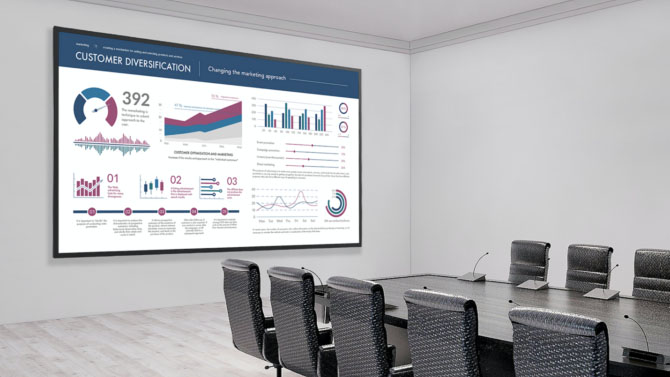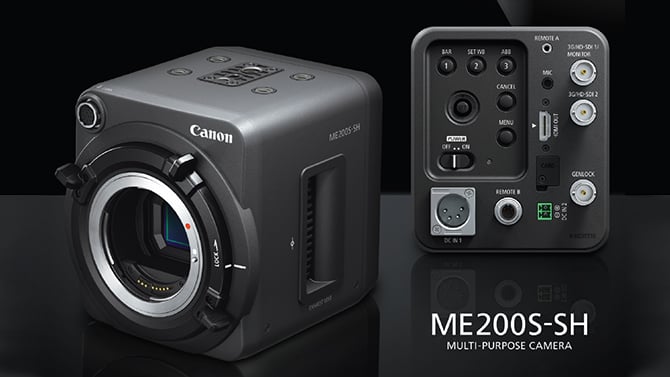Technology marches on. With the video industry’s growing adoption of 4K Definition:
Definition:
3840x2160-pixel video resolution. This is also often called Ultra HD or UHD. Also resolution of 4096x2160, which is popular in the film industry. resolution Definition:
Definition:
1. (video) The measure of pixels horizontally and vertically. For example, 1920x1080 is considered HD, or high-definition. 2. (audio) The combined bit depth and sample rate of a digital audio signal. and HDMI Definition:
Definition:
HDMI (High-Definition Media Interface): A standard for connecting video, audio, security, and control signals. Forum’s evolution from HDMI 1.4 to 2.0 and now HDMI 2.1 specification, it’s a great time to consider upgrading your video and display equipment.
Whether you’re in the education sphere, seek polished corporate communications, need top-quality displays for hospitality purposes or are looking to upgrade technology for your house of worship, 4K video and display equipment is more affordable than ever before.
Read on to learn how the latest, high-definition image technology brings a brilliant, captivating experience to every seat in the house.
Up Next, Image Clarity
While 4K technology has been embraced by residential community for a while, commercial customers have been slower to adopt. The reason? Many want proof of their ROI. Fortunately, there are immediate benefits you can see.
Higher resolutions pave the way for an immersive experience, one that produces crisp images at close distances. That means improved quality of interactive applications on wall-sized displays in public places. Coupled with advancements in large, lightweight, flexible display technology, wallpaper-like video can now be displayed in the unlikeliest of places.
Choosing What’s Right
Of course, not everything is created equal. When it comes to 4K, there’s native 4K and upscaling Definition:
Definition:
Converting a video signal to a higher resolution standard, but does not improve quality. 4K. In the case of the latter, the original source material typically isn’t 4K (instead, it’s a stretched 1080p Definition:
Definition:
1920×1080-pixel resolution with progressive scan, also known as Full HD. 1080p can sometimes also be informally referred to as 2K. source). Take a guess which one costs more. Because budget is a consideration and not everyone requires a native 4K projector, your decision-making process should be based on screen size and viewing distance.
Consider this: the higher the pixel Definition:
Definition:
A single point of light in a display. Display resolution normally specifies the total quantity of pixels, or the count of vertical and horizontal pixels. For example, HDTV is 1920x1080 pixels or 2,073,600 total pixels (2 Megapixels). density  Definition:
Definition:
A reverb parameter that represents the spacing between reflections. Shorter spacings give a richer, as opposed to sparser, sound. number, the smoother an image will appear. However, you may or may not need that to be true at every distance. If end users view media a few feet away, for example, a Quad HD-level display may suit you just fine.
HDMI 2.1 Offers More Benefits
In addition to 4K-compatible Definition:
Definition:
Capable of operating with a particular selection of hardware or software. projectors and displays, the HDMI cables that make this advancement in image quality possible are also evolving. Newer specifications to accommodate greater bandwidth Definition:
Definition:
A range of frequencies that a device can generate, reproduce, or process. This usually implies little or no alteration within the range. have resulted in the release of HDMI 2.0 and, just months ago, HDMI 2.1.
We appreciate the complexities of the specification change, as well as the fact that it’s an investment on your part. Fortunately, there’s ample, value-added perks that come with upgrading to HDMI 2.1. Here are the big ones.
- It supports a slew of A/V formats, with backwards compatibility with previous HDMI specifications.
- HDMI 2.1 brings Dynamic HDR
 Definition:
Definition:
HDR (High Dynamic Range): Composites two images, for highlight and dark areas, to supply higher dynamic range than a camera can achieve in one shot. performance to standard HDR10 and other types of HDR, resulting in improved HDR experiences for more products, in more formats. - In line with the current HDMI 2.0 spec, HDMI 2.1 supports BT.2020 with 10-, 12-, or 16-bit color.
- The introduction of eARC (“enhanced Audio Return Channel”) helps simplify and ensure compatibility between audio devices and soon-to-debut HDMI 2.1 products. That’s just the ticket for next-generation
 Definition:
Definition:
The number of times a recording has been copied. audio. - With improved refresh rates, you can expect better images and improved transitions when it comes to movies and video (gaming content, too).
- Lip sync
 Definition:
Definition:
1. To overlay a voice over a recorded video, in synchronization with the image. 2. To line up an audio and video signals transmitted separately, that are out of time with each other. issues are a thing of the past since HDMI 2.1 enables TVs to talk in real time to A/V receivers, Blu-ray Definition:
Definition:
An optical disc that can hold more data than a DVD or CD, has capacity for HD video and other data storage. Typical storage is 25 GB, although higher-capacity options exist. players, soundbars, game consoles and other source devices. - HDMI 2.1nearly triples the amount of data
 Definition:
Definition:
Information used by a computer in order to arrive at a decision. Although this is a plural term, it's often treated in the singular. that can simultaneously fit down an HDMI cable — therefore, new HDMI cables are needed to take full advantage of its benefits.
HDMI 2.1 Details to Keep in Mind
Remember there aren’t too many HDMI 2.1 devices just yet. And those that are available will require all new HDMI cables.
HDMI 1.4 is the ruling standard, with HDMI 2.0 growing rapidly. Both support 4K resolutions, but with restrictions. With 1.4 your 4K video will be limited to 24 or 30 frames per second and 8-bit color. HDMI 2.0 opens the throttle, handling up to 18 gigabits per second, enough bandwidth for 60 frames per second and 12-bit color.
Taking the Plunge
We know taking your business to the next level is your main priority. Whether you want to inspire your congregation with the latest in image technology, stimulate students with a multimedia learning experience, or bring a big-screen, gaming experience to life, upgrading to a 4K projector, display and accessories is a cost-effective way to accomplish your goals. Full Compass is here to answer lend expertise and resolve any nagging concerns.
To get started, check out our selection of:
Have questions? Contact us for answers
Or If you’re in the Madison area, join our FREE Tech Expo Wednesday, February 21 to check out the latest projectors, displays and video walls. Representatives from more than 15 top brands—including Sony, Optoma, InFocus, Panasonic, ADJ, Elation and Blizzard—will be on hand to demonstrate their newest models and answer your questions.
WHEN
Wednesday
February 21,2018
Noon – 6:30 p.m.
WHERE
Full Compass Systems
9770 Silicon Prairie Pkwy
Madison, WI 53593
















